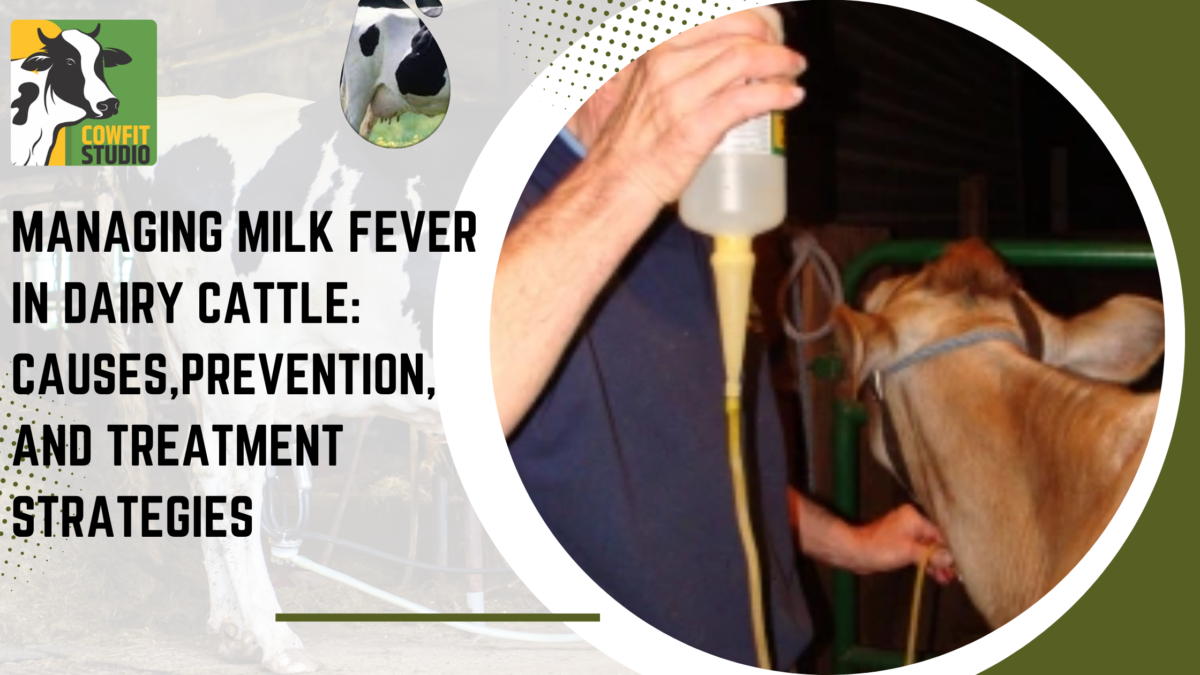Introduction:
Milk fever, also known as hypocalcaemia, is a common metabolic disorder affecting dairy cattle in the periparturient period. This condition, characterized by low blood calcium levels, can have detrimental effects on cow health and productivity if left untreated. In this blog post, we’ll delve into the causes, symptoms, prevention, and treatment of milk fever, equipping dairy cattle farmers with the knowledge they need to effectively manage this condition and safeguard the well-being of their herds.
Understanding Milk Fever:
Milk fever typically occurs within 72 hours of calving when demand for calcium for milk production exceeds the cow’s ability to mobilize calcium from its reserves. The initial stage of milk fever is marked by excitability, fine tremors, ear twitching, and head bobbing. As the condition progresses, affected cows may become recumbent and unconscious, with a loss of eye reflex and sub-normal body temperature. Additionally, milk fever may exist in sub-clinical form, increasing the risk of fever, metritis, and ketosis in dairy cattle.
Prevention and Treatment Strategies:
Preventing milk fever begins with proactive management practices and nutritional interventions. Here are some key strategies for preventing and treating milk fever in dairy cattle:
- Balanced Nutrition: Avoid feeding excess calcium supplements during late pregnancy, as this can disrupt calcium metabolism and increase the risk of milk fever. Instead, focus on providing a balanced diet rich in calcium and other essential nutrients to support cow health and milk production.
- Oral Calcium Supplementation: Administering oral calcium supplements to cows in the peri-parturient period can help prevent milk fever. Providing 3-4 doses of oral calcium, each containing 40-50 g of calcium, 12-24 hours before calving to 48 hours post-calving, can significantly reduce the risk of hypocalcaemia.
- Anionic Salts: Supplementing the diet with anionic salts such as ammonium chloride, magnesium sulfate, or ammonium sulfate during the last three weeks before calving can help acidify the blood and reduce the risk of milk fever. These salts help maintain calcium homeostasis and minimize the incidence of hypocalcemia in dairy cattle.
- Monitoring and Prompt Intervention: Monitor cows closely for signs of milk fever, such as excitability, tremors, and recumbency, especially in the immediate post-calving period. Contact a veterinarian immediately if symptoms are observed, as prompt treatment can prevent complications and improve outcomes for affected cows.
- Urine pH Monitoring: Regularly monitor urine pH in dairy cattle near the time of calving, aiming for a pH between 6.5-7. Higher urine pH levels indicate an increased risk of milk fever, warranting closer monitoring and intervention to prevent hypocalcaemia.
Conclusion:
Milk fever poses a significant health risk to dairy cattle during the periparturient period, impacting cow welfare and productivity. By understanding the causes, symptoms, and preventive measures associated with milk fever, dairy cattle farmers can effectively manage this condition and minimize its impact on their herds. Proactive management practices, balanced nutrition, oral calcium supplementation, anionic salt supplementation, and prompt veterinary intervention are key components of a comprehensive


